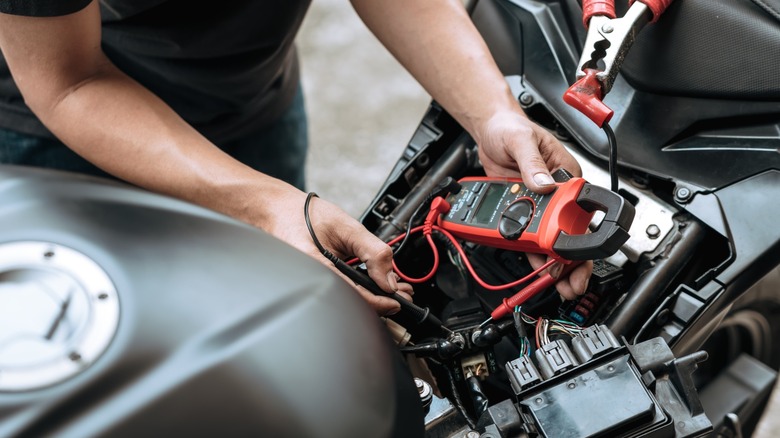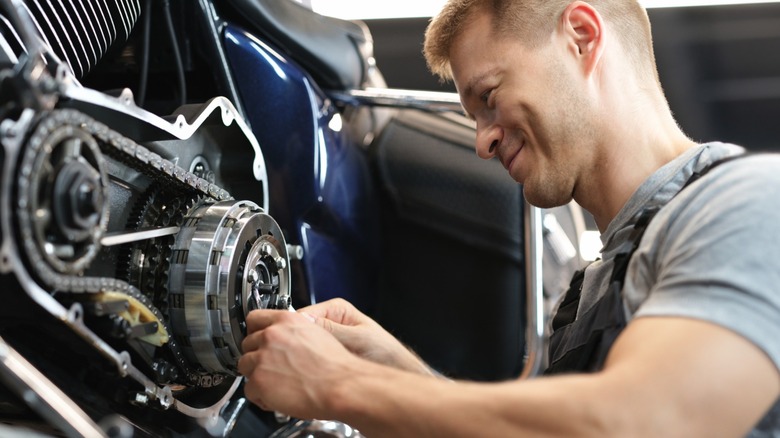Are Classic Motorcycles Easier To Maintain Than Their Modern Counterparts?
Most bikers will tell you there's nothing quite like riding a vintage bike. And to be fair, they're not wrong. There's a raw, unfiltered feel to it with just a frame, an engine, two wheels, and the road ahead. There's no traction control, no ABS, no ride modes. It's simple, stripped back, and that's a big part of why people love them so much. Plus, they look different, they ride different, and there's a kind of bond you form when you keep one running for a long time.
But once the nostalgia wears off, the reality starts to set in, especially when something goes wrong. Sure, older bikes are more hands-on. You can fix most issues with basic tools in your garage. And that kind of routine maintenance actually becomes part of the fun for a lot of riders. But what about when the job calls for parts that haven't been made in 40 years? Or when your simple fix turns into a weeks-long restoration project?
On the flip side, for modern bikes, the tech definitely makes them more reliable and easier to ride, especially for beginners. But when something does start to bug out, you'll most likely need a bunch of specialized devices or a trip to the dealership. Now that brings us to the big question: which motorcycle is easier to manage? Classic motorcycles or modern ones? Well, there are a few things to consider, so let's break them down for you.
Classic motorcycles are built for DIY maintenance
It's easy to see why classic motorcycles appeal so much to tinkerers. There's no maze of sensors, error codes, or plastic fairings hiding everything. It's just a few wires, some metal parts, and a layout that's actually not hard to make sense of. You can look at something, trace it back, and figure out what's going on without the assistance of a laptop. That's the beauty of older bikes. Their engineering is simple and exposed, which makes them much easier to work on if you've got a basic garage toolkit, a workshop manual, and a large dose of patience and curiosity. You can complete service tasks like adjusting the valves or rejetting the carburetor in your garage. For many riders, that hands-on routine is just as satisfying as taking their bikes on a ride.
But years down the line, even if you've got the tools and the know-how, one thing that can seriously slow you down is finding replacement parts. If you're riding a popular classic like a Honda CB, or Triumph, you may be in luck. There's a huge aftermarket for them. In fact, certain businesses exist just to make reproduction parts, and if your wallet is deep enough, you could pretty much build one from scratch.
However, for certain bikes, tracking down parts can be difficult. Some components just don't exist anymore, and you might find yourself digging through eBay listings or calling up salvage yards, hoping someone has what you need. And even when you do find it, it might not be cheap. The older and more obscure the part, the more likely it'll carry a collector's price tag. Plus, the older a bike, the more maintenance it needs, and that can quickly become tedious and expensive.
Modern bikes need less maintenance, but they're harder to tinker with
Modern motorcycles are designed with safety, efficiency, and performance in mind. As a result, there's now more gap between repairs and routine maintenance. These days, it's common to run 5,000 to 10,000 miles between oil changes, especially if you're using a good synthetic oil brand. You'd still have to perform routine maintenance on the motorcycle, like checking tire pressure and changing fluids.
While these tasks are still generally DIY-friendly, anything more complex will most likely require a proprietary scan tool. And that's where many motorcycle owners get stuck. A clogged fuel injector, for instance, isn't as simple to sort out as cleaning a carburetor. Most components are sealed and software-driven, so you can't just troubleshoot issues with only a wrench and a screwdriver. It often takes a tech-savvy owner or a visit to the mechanic to get it sorted, and professional labor isn't cheap. In fact, sometimes what you really need is a brand-specific diagnostic tool, and in that case, your only option might be the dealership.
As it stands, in many ways, classic bikes are easier for a hands-on owner, because they're simpler and more mechanical, you can take them apart and figure things out without a computer science degree. But then again, sourcing parts, especially for really old and rare models, can be quite challenging, unless you pick one of the popular classic motorcycles that are not too hard to restore. On the other hand, modern bikes are easier if you'd rather spend your weekends riding, not wrenching. They're more reliable and less demanding. However, while routine maintenance is minimal, unfortunately, non-routine repairs tend to be more difficult. For anyone who wants the best of both worlds, there are a few modern classics worth considering.


